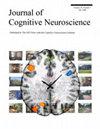How Linguistic and Nonlinguistic Vocalizations Shape the Perception of Emotional Faces—An Electroencephalography Study
IF 3
3区 医学
Q2 NEUROSCIENCES
引用次数: 0
Abstract
Vocal emotions are crucial in guiding visual attention toward emotionally significant environmental events, such as recognizing emotional faces. This study employed continuous EEG recordings to examine the impact of linguistic and nonlinguistic vocalizations on facial emotion processing. Participants completed a facial emotion discrimination task while viewing fearful, happy, and neutral faces. The behavioral and ERP results indicated that fearful nonlinguistic vocalizations accelerated the recognition of fearful faces and elicited a larger P1 amplitude, whereas happy linguistic vocalizations accelerated the recognition of happy faces and similarly induced a greater P1 amplitude. In recognition of fearful faces, a greater N170 component was observed in the right hemisphere when the emotional category of the priming vocalization was consistent with the face stimulus. In contrast, this effect occurred in the left hemisphere while recognizing happy faces. Representational similarity analysis revealed that the temporoparietal regions automatically differentiate between linguistic and nonlinguistic vocalizations early in face processing. In conclusion, these findings enhance our understanding of the interplay between vocalization types and facial emotion recognition, highlighting the importance of cross-modal processing in emotional perception.语言和非语言发声如何塑造情绪面孔的感知——一项脑电图研究。
声音情绪在引导视觉注意力转向具有情感意义的环境事件(如识别情绪化的面孔)方面至关重要。本研究采用连续脑电图(EEG)记录研究语言和非语言发声对面部情绪加工的影响。参与者在观看恐惧、快乐和中性的面孔时完成了一项面部情绪辨别任务。行为和ERP结果表明,恐惧的非语言发声加速了对恐惧面孔的识别,引起了更大的P1振幅,而快乐的语言发声加速了对快乐面孔的识别,同样引起了更大的P1振幅。在识别恐惧面孔时,当启动声音的情绪类别与面部刺激一致时,右半球观察到更大的N170成分。相比之下,在识别快乐面孔时,这种效应发生在左半球。表征相似性分析表明,在人脸处理早期,颞顶叶区域会自动区分语言和非语言发声。总之,这些发现增强了我们对发声类型和面部情绪识别之间相互作用的理解,突出了跨模态加工在情绪感知中的重要性。
本文章由计算机程序翻译,如有差异,请以英文原文为准。
求助全文
约1分钟内获得全文
求助全文
来源期刊
CiteScore
5.30
自引率
3.10%
发文量
151
审稿时长
3-8 weeks
期刊介绍:
Journal of Cognitive Neuroscience investigates brain–behavior interaction and promotes lively interchange among the mind sciences.

 求助内容:
求助内容: 应助结果提醒方式:
应助结果提醒方式:


